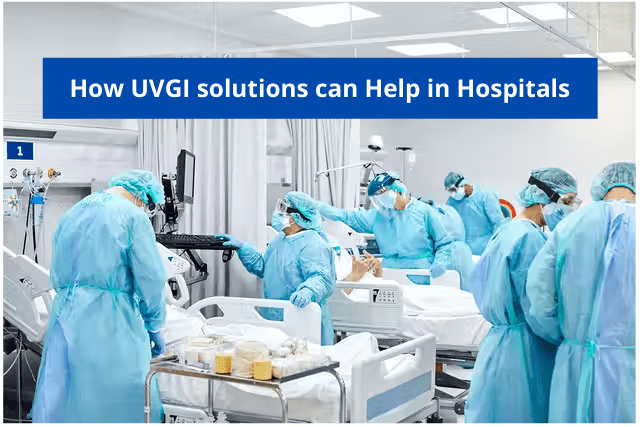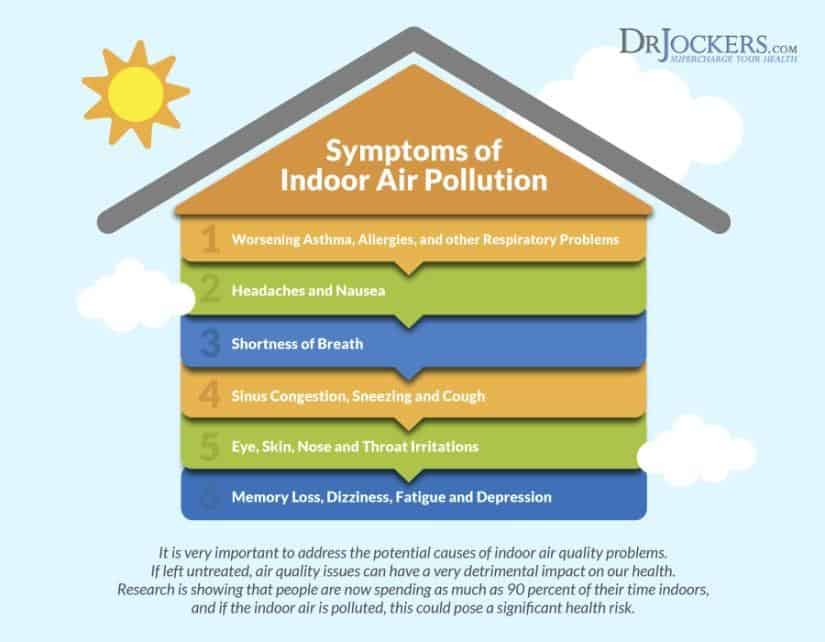
HOW UVGI SOLUTIONS CAN HELP IN HOSPITALS
Hospitals are prone to infections and airborne hazards, especially when overcrowded. The air and surfaces can quickly accumulate dirt, dust, viruses, and bacteria. While hospitals continuously sanitize all spaces to maintain a safe environment, they often neglect the disinfection of HVAC systems with air purifiers.
HVAC and Indoor Air Quality in Hospitals
The Heating, Ventilation and Air-Conditioning (HVAC) system is crucial for maintaining good indoor air quality through ventilation with filtration and providing thermal comfort. However, these systems can work inefficiently under certain circumstances:
- The filter isn’t cleaned or changed regularly.
- There are faults in the duct system.
- There is excess moisture, leakage, or condensation in the system.
- Microorganisms can grow rapidly on cooling coils due to humidity, resulting in poor heat transfer between the coil and air, leading to greater energy consumption.
As a result, the HVAC system can attract dust, debris, mold, mildew, viruses, bacteria, and other allergens, significantly reducing Indoor Air Quality (IAQ) and increasing the risk of airborne infections, particularly through sick patients. According to ASHRAE, Hospital Acquired Infections (HAI) are a major health threat, and HVAC systems can act as reservoirs and amplifiers for pathogenic bacteria and fungi. The World Health Organization (WHO) reports that a substantial number of hospitalized patients worldwide acquire at least one HAI.
Dr. Wladyslaw Kowalski, Vice President of Immune Building Systems, Inc., New York, highlighted in a paper that hospitals often underestimate the presence of airborne microbes in their operating rooms and ICUs, believing that the air quality is acceptable if ventilation systems are designed according to existing codes or guidelines.
Some airborne viruses and bacteria can cause diseases such as influenza, tuberculosis, and respiratory diseases, putting patients, healthcare staff, and visitors at significant risk. Studies have shown:
- Indoor air problems in hospitals are a major challenge for occupational health.
- Hospital workers experience indoor air-related symptoms more than office workers.
- There is a high association between IAQ and Sick Building Syndrome (SBS) in hospitals.

How Can UVGI Tackle Air Purification at Hospitals?
An article in Antimicrobial Resistance & Infection Control discusses the ‘WASTE’ approach to hospital hygiene and emphasizes the need for a highly sophisticated disinfection and air purification solution to overcome the drawbacks of traditional cleaning. Ultraviolet Germicidal Irradiation (UVGI) is an ideal solution.
UVGI is electromagnetic radiation using UV-C energy with a shorter wavelength that penetrates the cell walls of microorganisms, modifying their DNA and RNA structure, making them ineffectual and unable to reproduce or infect anyone. UVGI is a safe and effective method to control pathogens.

When used in HVAC systems in hospitals, UVGI can destroy HAI-causing microorganisms and improve IAQ. ASHRAE also recommends using UVGI in conjunction with HVAC systems. UVGI is also highly effective in making the SARS-COV2 virus non-viable, with studies indicating it can kill over 99.9% of COVID-19 viruses present in airborne droplets and surfaces.

